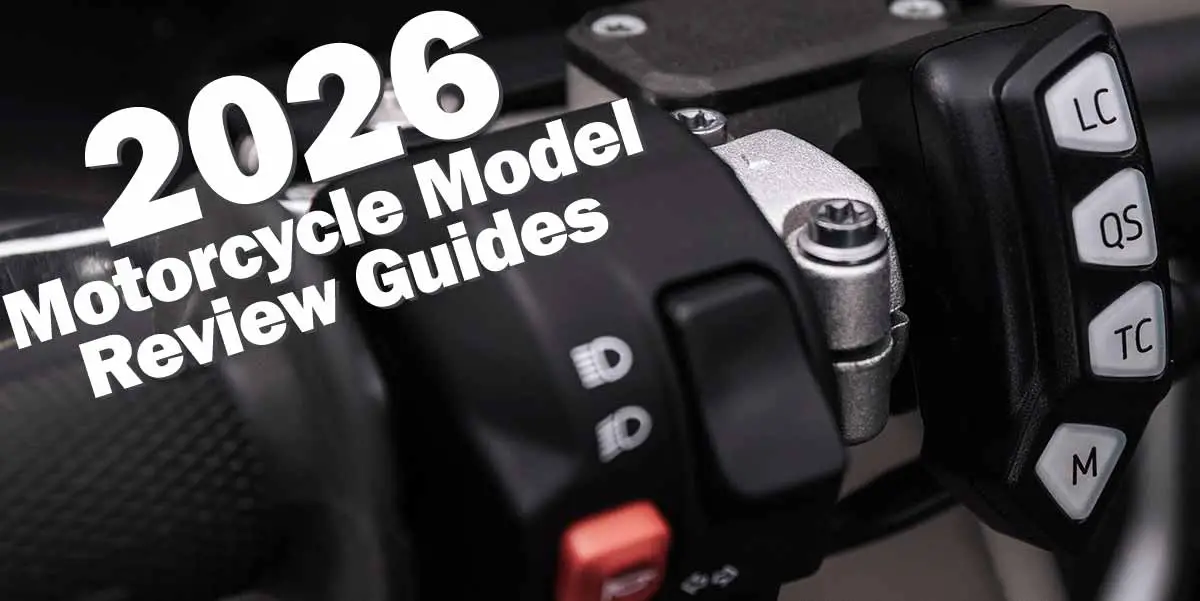
Section Four: Motorcycle Gear and Gearing Up
Gear, gear, gear. I’m gonna have to write something here! 25 Pages of information is below, more than you’ll find elsewhere, and free too, so fill up and read on!
Remember to always wear your safety gear when riding a motorcycle. After all, you do want to ride for a lifetime, why cut it short?
Motorcycle Gear: Gearing Up for the Ride
- Riding Equipment
- Helmets, Beanie/Puddin’ Bowl, Half Helmet, ¾ or Open-Face, Full Face, Flip-Up
- Gloves, Leather, Textile, Recommendations, What to Look For
- Jackets, Leather, Textile, Recommendations
- Boots
- Pants
- Accessories
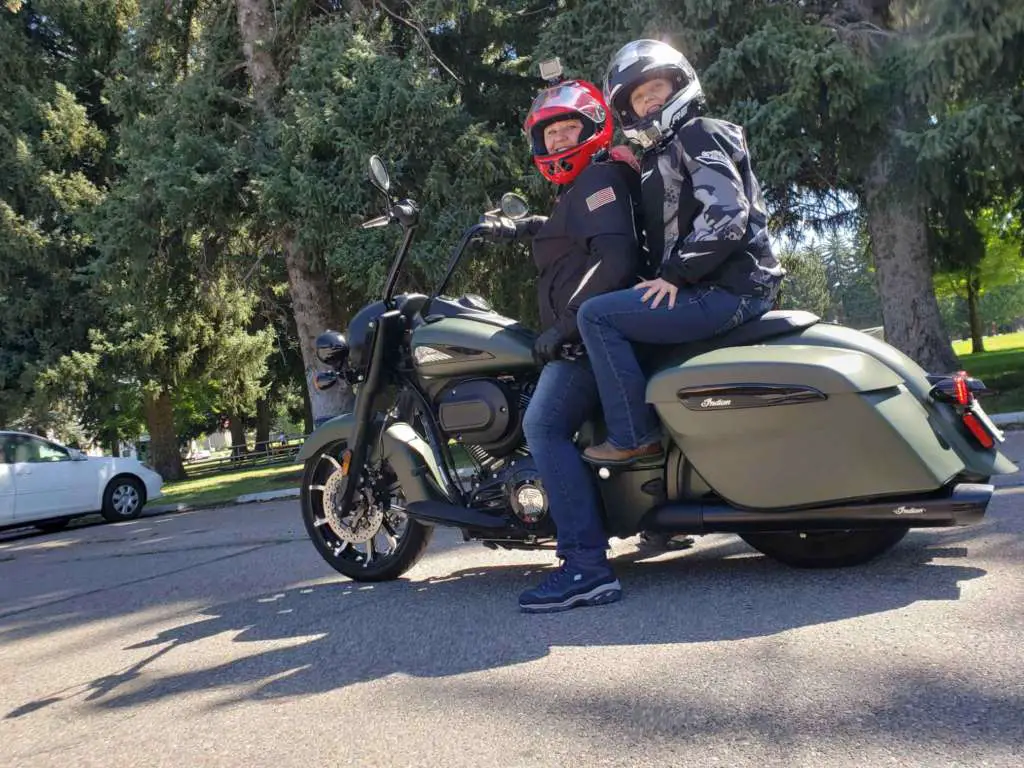
Riding Equipment
Getting the proper equipment for the task is as important in motorcycling as in any activity. Remember falling off your bicycle as a kid? That was at a fraction of the speed of a motorcycle crash. Protective gear is essential every time you ride.
Riding gear includes helmets, gloves, jackets, boots, pants, and accessories like heated gloves or vests. Each has pros and cons, and I’ll cover both to help you decide what to buy or upgrade. I’ll also touch on the history of gear to show how it evolved into what we use today.
If you can afford new gear, buy it, its job is to save your life. Used gear is better than nothing, but you can’t always know its history. A high-quality used item may be safer than a low-quality new one, but the choice is yours.
Gear comes in many sizes, styles, and fits for both men and women. Visibility is critical: choose bright, solid colors (yellow, gold, white, orange, bright blue, green, red) with reflective strips. These stand out in traffic and poor weather. For example, I wear a yellow/black jacket and notice that drivers see me more readily.
Motorcycle Helmets
Helmets are the single most important piece of riding gear. While some regions make them optional, studies consistently show they save lives and reduce head, face, and neck injuries. A used helmet is worthless, you can’t tell if it’s been dropped or damaged internally. Always buy new if possible.
Helmets protect against impact, crushing, and abrasion. They come in several types, offering varying levels of protection and convenience:
Beanie / Puddin’ Bowl

Positives: Protects the top of the head. Minimal protection but better than nothing. Easy to wear, doesn’t block vision or hearing, inexpensive, and fits the cruiser “bad boy” look.
Negatives: Offers almost no protection beyond the top of the skull. Doesn’t shield from weather, debris, or impacts to the face and sides. Many are not DOT-approved, and some carry fake stickers. Better than no helmet, but not by much.
Half Helmet

Positives: Protects the top and sides of the head, including ears. More coverage than a beanie, still easy to wear, doesn’t block vision, and usually affordable. Some models include leather ear protectors.
Negatives: Still leaves the face, chin, and much of the neck exposed. Limited weather and debris protection. Wind noise can be damaging over time.
¾ or Open-Face Helmet

Positives: Protects the head, neck, ears, and eyes. Offers more coverage than half helmets, with the convenience of a flip-up shield for eating, drinking, or photos. Doesn’t block peripheral vision and is cheaper than a full-face helmet.
Negatives: Still leaves the chin and face vulnerable. Provides some weather and debris protection but less than a full-face helmet. Can also muffle outside sounds.
Full Face Helmet

Positives: Provides maximum protection for the head, neck, ears, eyes, face, and chin. Shields against rain, wind, bugs, debris, and cold. Designed to maintain peripheral vision while offering the highest crash protection.
Negatives: Can muffle outside noise. Requires removal for eating, drinking, or photos. Inconvenient for eyeglass wearers. Typically the most expensive helmet type.
Flip-Up Helmet
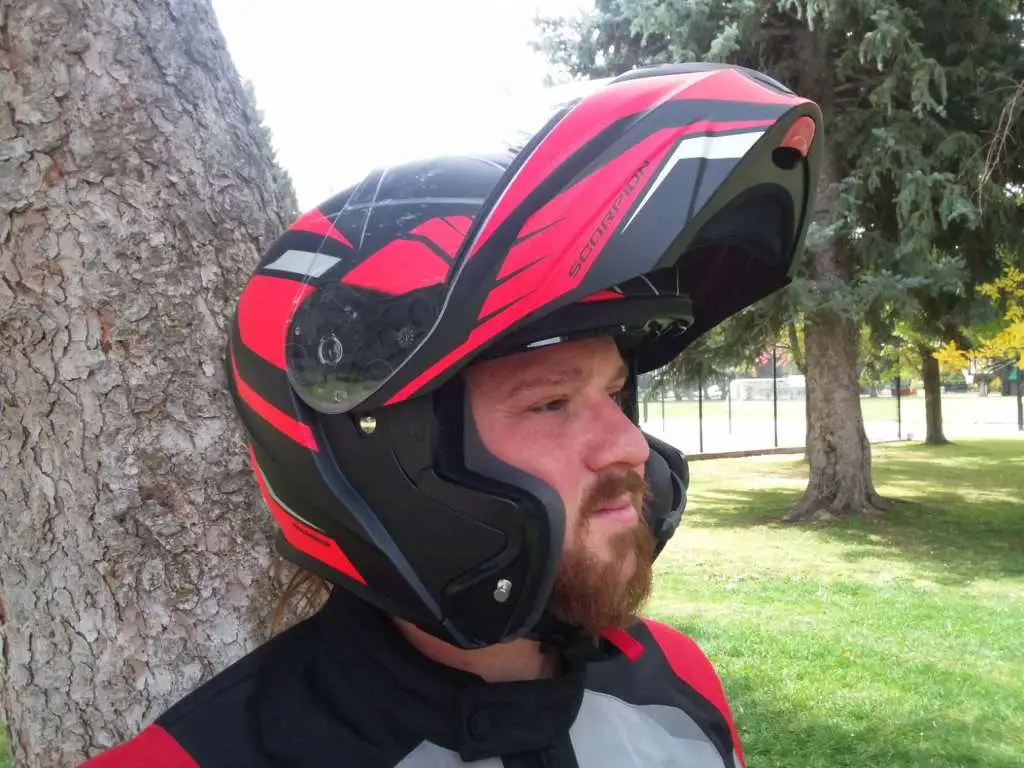
Positives: Offers full-face protection with the convenience of a flip-up chin bar. Easier for eating, drinking, or wearing glasses. Maintains peripheral vision and shields against weather and debris.
Negatives: More expensive than standard full-face helmets. May not be as structurally strong in a crash if the chin bar opens on impact. Still relatively new technology, so long-term safety data is limited.
Helmet Safety Standards
Always check for a safety certification label on the helmet shell or liner. If none is present, avoid the helmet. In North America, the two primary standards are DOT and SNELL.

DOT: The U.S. Department of Transportation standard. It is the minimum legal requirement and relies on manufacturer self-certification. Some helmets carry fake DOT stickers, so buy from reputable brands.

SNELL: The Snell Memorial Foundation is an independent lab that performs more rigorous testing than DOT. Manufacturers must submit helmets for testing, making SNELL certification more costly but also more thorough.
Rider perspective: Many helmets are both DOT and SNELL certified. If you can afford a SNELL helmet that fits your style and comfort, it’s a solid choice. DOT-only helmets from reputable manufacturers can also perform well. The key is wearing a certified helmet, regardless of standard.
Gloves

Gloves are a critical safety item. In a fall, most people instinctively reach forward with palms down, making hands highly vulnerable. Without gloves, riders risk severe abrasions and blood loss. Protective gloves prevent these injuries and keep your hands functional.
Motorcycle gloves come in leather or textile, with options for all weather conditions. Modern materials like 3M Thermalite provide warmth without bulk, while summer gloves offer ventilation without sacrificing protection. Gloves are available in countless styles and colors, allowing riders to match their gear or bike.
Gloves may not be a frequent topic of conversation among riders, but their importance cannot be overstated. They are one of the simplest, most effective pieces of gear you can wear.
What to Look for in Gloves
- Choose gloves designed for the type of riding you’ll be doing.
- Strong stitching, especially in impact areas.
- Leather thickness (for durability and abrasion resistance).
- Armor or padding in high-impact zones, especially the palms.
- Proper fit, fingers should move freely, controls should be easy to operate.
- Warmth or cooling features for your climate.
- Comfort, gloves should feel natural for long rides.
- Length, gauntlet-style gloves protect wrists from wind, rain, and debris.
- Protection where you need it most, palms, knuckles, or fists depending on your habits.
Whether you’re commuting, cruising, or racing, there’s a glove designed for your needs.
Recommendation: If you ride without a windshield (or one that doesn’t cover your hands), consider gauntlet-style gloves that extend over your jacket cuffs. They block wind, rain, and debris from entering your sleeves, making rides more comfortable.
Textile Gloves
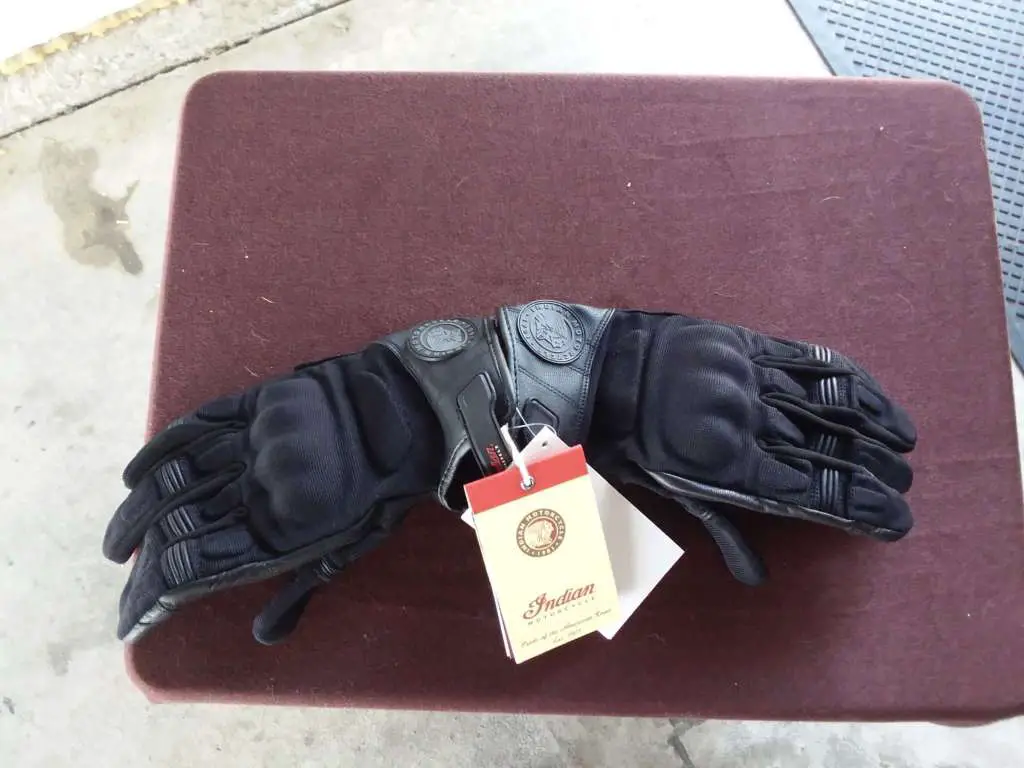
Textile gloves are a relatively recent innovation, designed to offer leather-like protection while addressing some of leather’s drawbacks. Made from advanced materials like Kevlar and Ballistic Nylon, they are now as common as leather gloves. Each year, textile technology improves, making gloves lighter, softer, and more protective.
Positives: Easy to integrate with armor (Kevlar, plastic, metal). Available in more colors and styles. Excellent resistance to rain and wind. Won’t shrink or bleed color when wet. High abrasion and puncture resistance.
Negatives: Typically more expensive. Less soft and pliable than leather. Can feel bulky. Difficult to repair if damaged.
Leather Gloves

Leather gloves have been around as long as motorcycles. Made from cowhide in varying thicknesses and grains, they range from cheap cosmetic versions to professional racing standards. Protection depends on both leather thickness and stitching quality. Leather gloves remain popular for their balance of cost, comfort, and protection.
Positives: Affordable and widely available. Easy to repair. Soft, comfortable, and naturally wind-resistant. Fits the classic cruiser look.
Negatives: Not water-resistant; can shrink when wet. Dark colors may bleed dye onto skin. High abrasion resistance but weaker puncture resistance.
Jackets
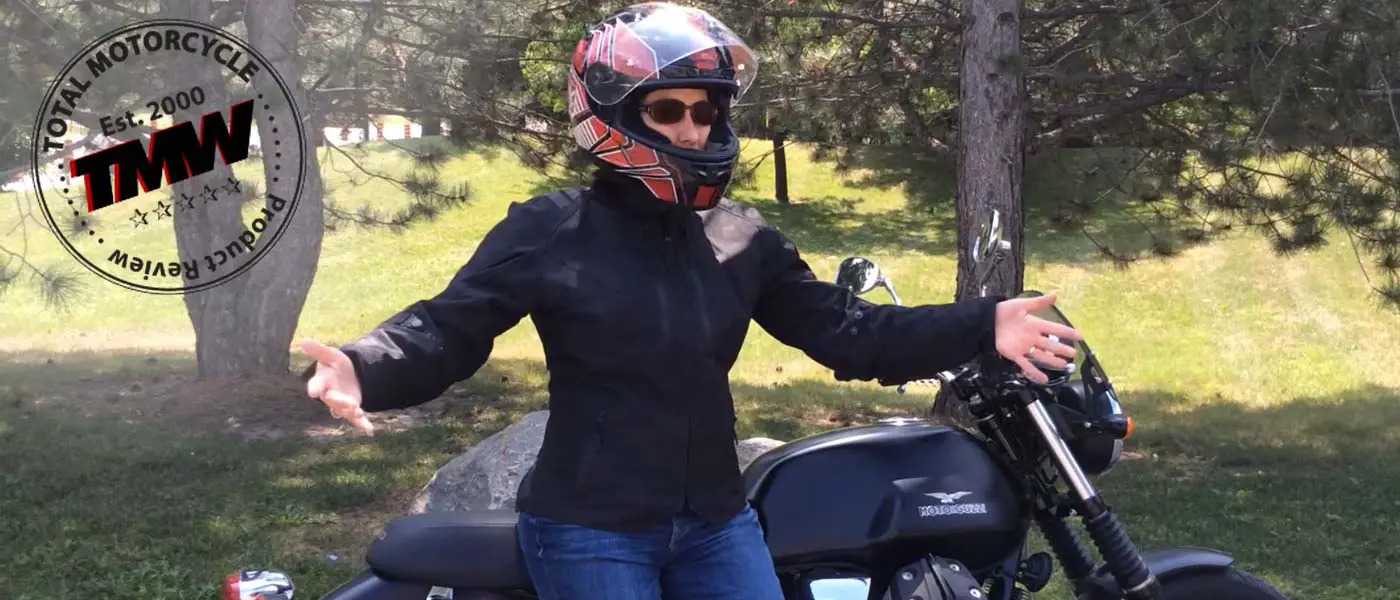
Jackets are the second most debated piece of gear after helmets. Like gloves, they come in leather and textile. Leather has tradition and style, but textile is catching up fast, offering advanced protection and features. Professional racers increasingly wear textile suits, though leather remains iconic.
Jackets protect against abrasion, impact, and puncture injuries. High-quality jackets use thick leather or advanced textiles, reinforced stitching, armor inserts, Kevlar, rivets, and foam padding. Bright colors or reflective strips improve visibility, making you more noticeable to drivers.
What to Look For:
- Proper fit, with room for layers underneath.
- Armor positioned correctly over shoulders and elbows.
- Strong seams and stitching, especially at impact points.
- Reflective or white strips for night visibility.
- Leather thickness of at least 1mm for durability.
- Ventilation for hot-weather riding.
- Bright colors for visibility, avoid all-black if possible.
Leather Jackets

Leather jackets have been around as long as motorcycles. Made from cowhide in varying grains and thicknesses, their protection depends not only on leather quality but also on stitching strength. Leather jackets range from cheap cosmetic versions to professional racing standards. They are generally more expensive than textile jackets but are softer, easier to repair, and can last longer.
Positives: Widely available in many styles and colors. Easy to patch and repair. Comfortable, warm, windproof, and highly abrasion-resistant. Fits the classic “cruiser” look.
Negatives: Not water-resistant; can shrink when wet. Dark colors may bleed dye. Heavier and less ventilated than textile jackets, making them hot in summer. Styles are often limited to black.
Textile Jackets
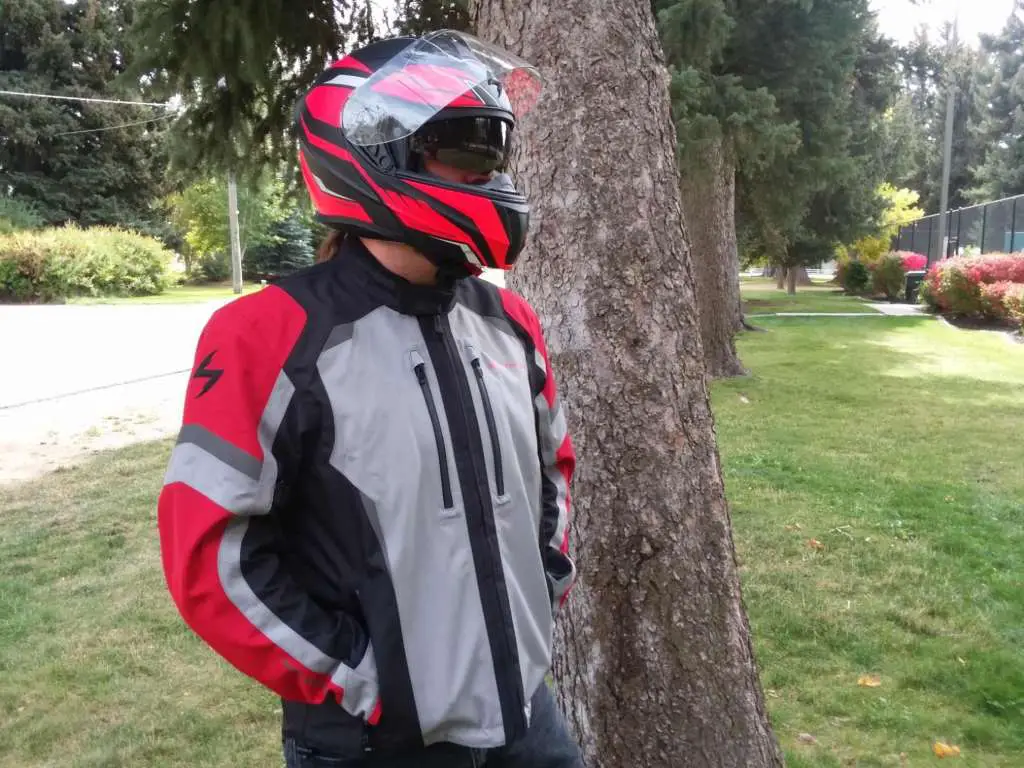
Textile jackets are a more recent innovation, designed to offer leather-like protection while addressing leather’s drawbacks. Made from advanced materials like Kevlar and Ballistic Nylon, they often include vents, waterproofing, and removable liners. Armor and padding can be integrated without compromising style. Textile jackets appeal to riders seeking high-tech protection and versatility.
Positives: Usually less expensive than leather. Easily integrates armor. Available in many colors and styles. Better rain and wind protection. Lighter and cooler in hot weather. High abrasion and puncture resistance.
Negatives: Less soft and pliable than leather. Harder to repair if damaged. Not fully waterproof in prolonged rain due to stitching holes. Can feel bulkier than leather.
Textile & Leather Suits
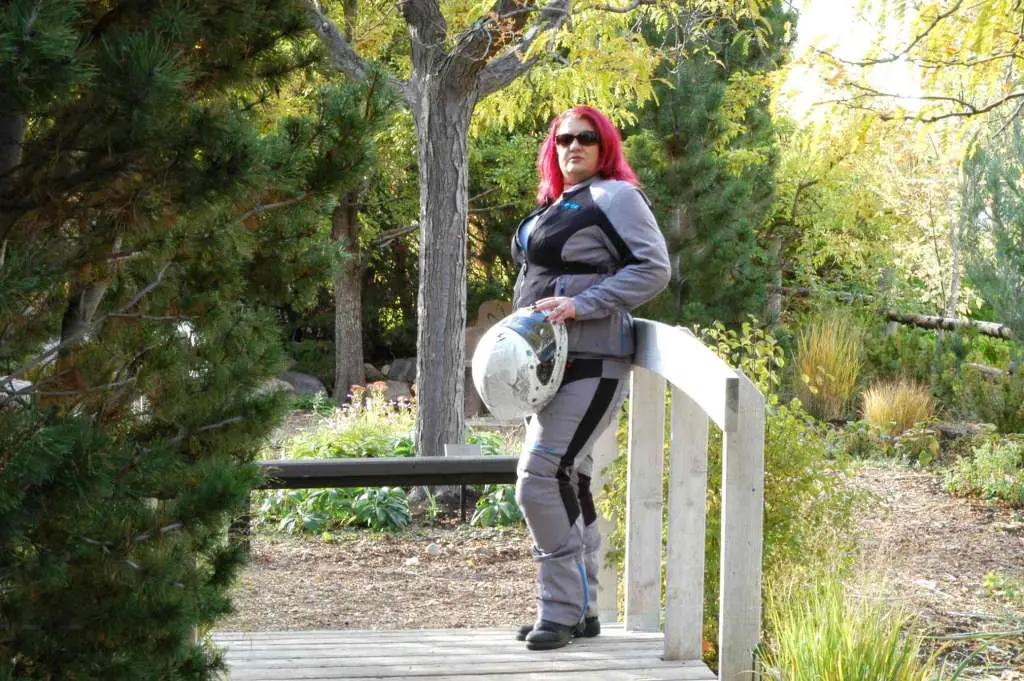
One- and two-piece riding suits are designed for maximum protection. While jackets and pants can be combined, suits provide stronger integration. One-piece suits eliminate weak points between jacket and pants, making them favored by racers. Leather suits dominate racing for their repairability and abrasion resistance, while textile suits are popular for all-weather touring.
Both leather and textile suits share the positives and negatives of their jacket counterparts. They offer excellent protection against wind, rain, and debris, and are available in a wide range of styles and colors.
Motorcycle Boots

Boots are essential safety gear, though standards vary outside racing and dirt riding. Opinions differ on style, but most agree on key features. Never ride in bare feet, sandals, sneakers, or casual shoes, they offer no protection in a crash.
Recommended boots cover the ankle, are made of leather, have good traction, and ideally feature oil- and gas-resistant soles. Reflective elements improve visibility. Armor, such as steel toes, adds protection. While some worry steel toes could cause injuries, in practice they often prevent worse damage.
Personal Experience: A steel toe plate once saved my toes when a sharp object cut through the leather but was stopped by the steel. For this reason, I recommend full-height, steel-toe, leather boots with durable soles that are also comfortable for walking.
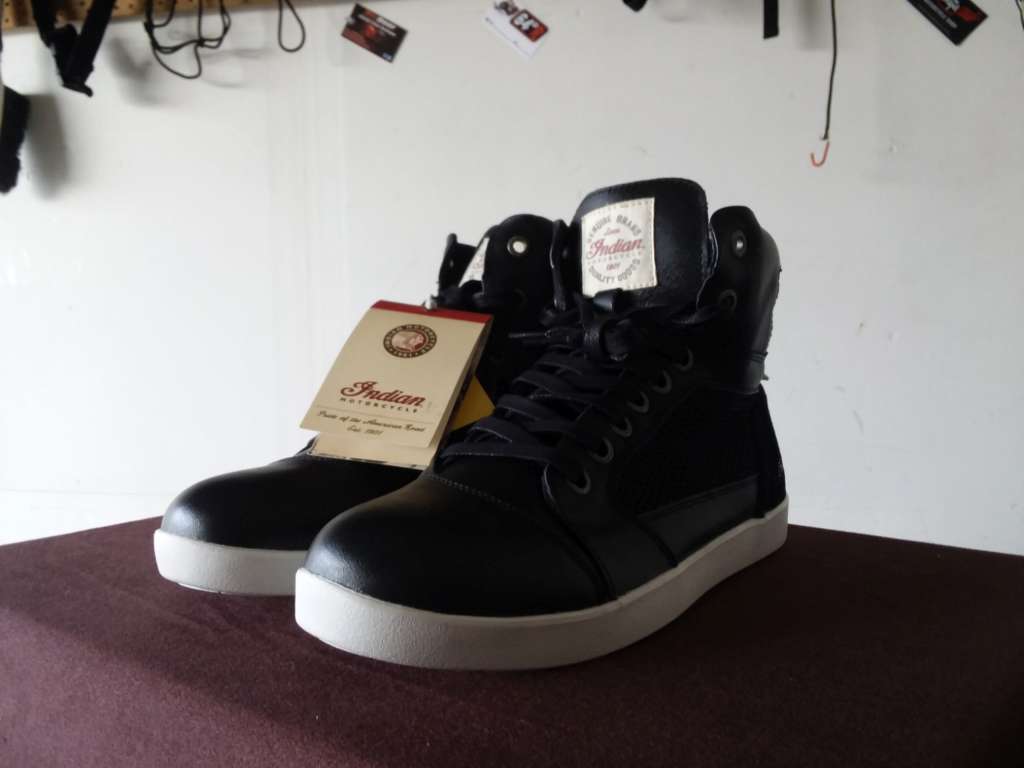
Laces: Bane or Benefit?
Laces can be a potential hazard if they come undone and get caught in the chain, belt, or spokes. While rare, it’s worth noting. If your boots have laces, tie them securely and check them at fuel stops. Double-knotting or tucking them in helps. Shorter laces reduce the risk of snagging, while zippers, buckles, and Velcro straps (common on racing boots) are safer alternatives.
The benefit of laces is their affordability, availability, and ease of replacement. They can also be cut quickly in emergencies to remove a boot. Don’t stress too much, just manage them properly.
What to Look For in Boots:
- Ankle support and above-the-ankle coverage with leather or strong material (not foam).
- Oil- and gas-resistant soles for traction and durability.
- Comfortable for walking longer distances.
- Armor or reinforcement (steel toe, ankle, or foot plate).
- Toe shape that fits comfortably between peg and shifter.
- Secure fasteners, zippers, buckles, Velcro preferred, but laces are acceptable if managed.
Pants

Pants are a sensible and popular safety item. Shorts, swimwear, or casual clothing offer no protection in a crash. Since pants cover a large portion of the body, quality matters. While bright-colored pants are rare, reflective strips can be added for visibility.
Blue Jeans
The most common choice for riders. Jeans are comfortable, affordable, and widely available. They provide minimal protection, are not wind- or waterproof, and cuffs can snag on boots. At highway speeds, they wear through quickly in a slide. Used jeans without worn spots may actually slide farther than new ones.
Chaps
Popular with cruiser riders, available in leather or textile. They add wind and water resistance and some leg protection. However, they leave hips, groin, and seat exposed, offering limited crash protection compared to full pants.
Leather Pants

Less common due to cost and weight, but they provide excellent protection by fully covering the lower body. They share leather’s drawbacks: heavy, hot in summer, not water-resistant, and often only available in black. Still, they offer superior abrasion resistance and can be worn over jeans for added protection.
Textile Pants
Made from the same advanced materials as textile jackets, they are lighter, more comfortable, and often designed to slip over jeans. Many include padding or armor. They are less expensive than leather and increasingly popular, though not as durable in the long term.
Other Types: Reinforced Jeans

Reinforced jeans (e.g., Draggin Jeans) combine the casual look of denim with added armor, stitching, and padding. They offer more protection than standard jeans at a reasonable price, though less than leather or textile pants. They also wear out faster than dedicated riding gear.
Biker Accessories

Safety gear does not always mean protection, it can also mean precaution. Accessories that make riding safer, more comfortable, and more enjoyable may prevent you from ever needing to rely on your crash gear. Here are some useful items to consider:
Heated and Cooling Accessories
Vests, jackets, heated grips, thumb warmers, neck wraps, and hydration packs help regulate body temperature. Staying too hot or too cold can impair reaction times, vision, and judgment. If you ride in extreme temperatures, invest in gear that keeps your core temperature stable.
Suggestions
- Heated plug-in items: Essential for cold-weather riding. Many long-distance riders swear by them.
- Cooling vests: Just as important on hot days, making rides bearable in extreme heat.
- Neck wraps: Regulate blood temperature and protect against wind. Fleece for winter, water-retaining for summer.
- Reflective strips: Inexpensive and effective. Apply to jackets, pants, helmets, or even your bike for visibility.
- Rain suits: One- or two-piece suits are invaluable when sudden showers hit. Even a poncho and plastic bags for your feet are better than nothing.
- Tools: Carry a small kit with essentials like a tire gauge, electrical tape, and zip ties. Long-distance riders often add cell phones, first aid kits, and GPS units. A satellite phone ensures coverage anywhere, while GPS eliminates the need for maps.
General Information
Helmet Manufacturers Websites
AFX, AGV, AGV US, Arai Helmet Ltd, Answer, Axo, Bell Sports, Bell Motorsports, Bieffe Racing, Boeri, Briko, Cross S.A., Fengxing – MHR, Fulmer, G-Force Racing, Giro, HJC USA, KBC, Leedom International, Lucky Bell, M2R, MSR, Nolan, OGK, O’Neal, Rodia, Beijing, Schuberth, Security Race Products, Shark Helmets, Shoei North America, Simpson Race Products, Soaring Helmet Corp, Specialized, Stand 21, Strategic Sports, Suomy (Vigano), THH, Thor, Trek USA, Vemar Helmets, Vigor Sports, Zamp Racing


